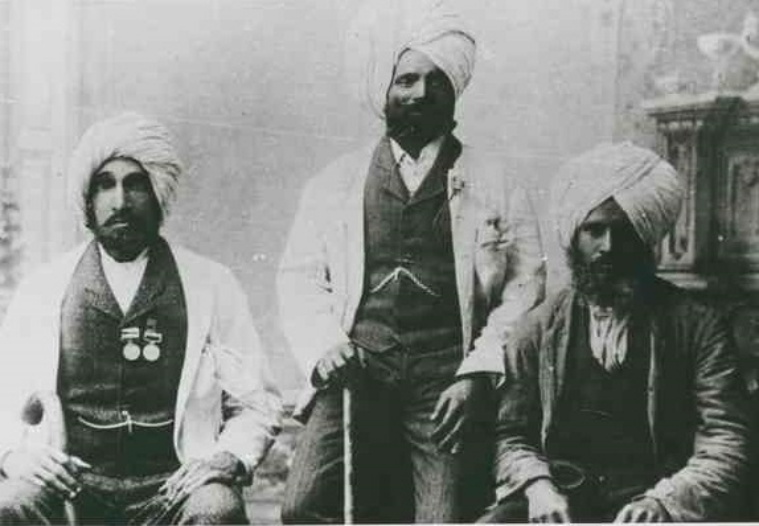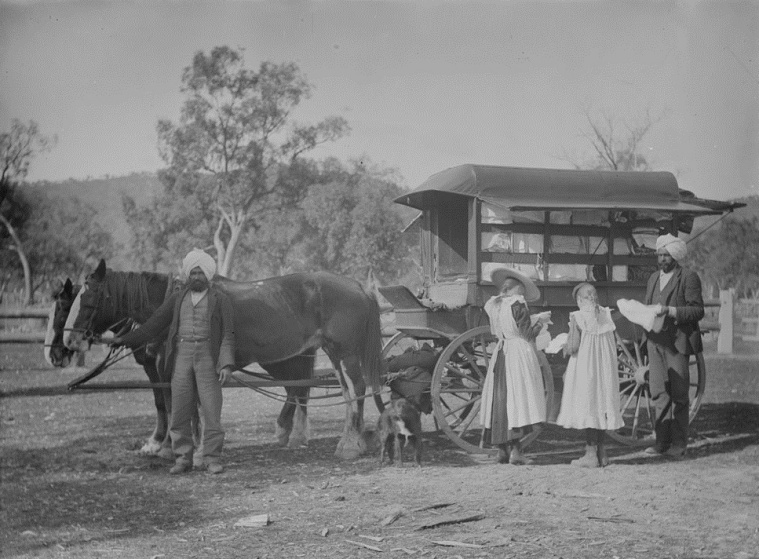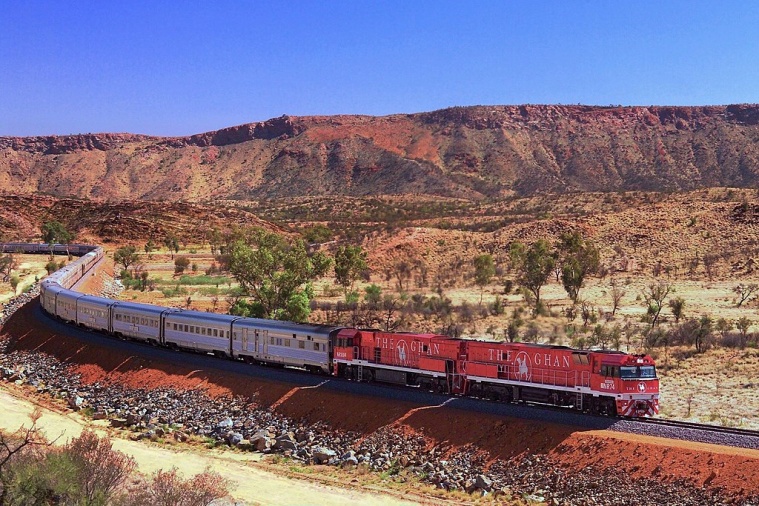Dabee Singh was about 42 when he arrived in Australia onboard the ‘Minerva’ that had set sail from Calcutta in 1844. Originally from Benaras, Singh was hired as a domestic servant under indentured contracts by a certain Phillip Friell and Gordon Sandeman. Upon landing though, they were transported to Ipswich where they were employed as shepherds and hut keepers. The story goes that Singh along with his wife lived in Australia for several years afterwards, making a family and creating a lot of wealth. In his attempt to honour the Indian city to which he belonged, his 27-acre property in Ithaca was named Benaras.
Australia had been discovered by the Dutch East India Company in the 17th century and by the 18th century, the British government took a keen interest in settling this new found southern continent. People from British India and the other territories of the British Empire, like Dabee Singh, played a key role in this process. They brought with them domestic animals and exotic goods from India and helped in the exploration of the continent. Indians and Anglo-Indians were in fact the first people to sail across the Bass Strait in 1797 and discover the Southern coast of Victoria.
The early settlers from the British colonies
The first British fleet arrived in Australia to establish a new colony on January 26, 1788. Apart from the seamen, marines, and government officials it also carried a number of convicts. These were people who had been convicted in England and included men and women born in India, North America, the West Indies, Africa as well as Ireland.
Historian Cassandra Pybus, in her book ‘Black founders: The unknown story of Australia’s first Black settlers’, writes that the First Fleet transport ship named Alexander that arrived in New South Wales, carried 12 Black men. They had been convicted in England for petty crimes such as theft of watches or clothes. Pybus writes that these convicts were illiterate and there is hardly any record of why and how they happened to be in England. She found evidence of the origins of only one among the 12, which points to some information about the profiles of the earliest settlers in Australia. This was a man named Caesar, who was from Madagascar and may have been a slave in England at the time of his arrest.
 There were also a small number of Indians who entered Australia as indentured labourers in the early part of the 19th century. (Australia Sikh Heritage)
There were also a small number of Indians who entered Australia as indentured labourers in the early part of the 19th century. (Australia Sikh Heritage)
From the time the second fleet of British ships left for Australia, it was mandated that all the convicts had to be transported on ships owned by the English East India trading company. Consequently, a majority of the convict ships sailing into Australia were built in India and manned by Indian sailors. Some of the first convict ships to land in Australia included the HMS Duchess of York that set sail from Bengal and arrived in Port Jackson in 1807, the Almorah that set off from Britain and stopped over at Madras and Bengal in 1818 and the Cawdry that arrived in Australia in 1826. Many of the Indian sailors in these ships either deserted their ships on arrival in Australia or were left behind by their captains while they were visiting Australian ports. They stayed on in the new continent as its earliest settlers.
Then there were the menservants accompanying the British soldiers and officials. These officers had served with the British army in India or in the EIC. The first four governors of early New South Wales, for instance, had previously served in India.
There were also a small number of Indians who entered Australia as indentured labourers in the early part of the 19th century. They were soon followed by many more when the first major importation of indentured labourers arrived in South Australia in the 1860s. Most of them were employed as cameleers in inland Australia, although several others were imported to work on the sugarcane fields of North Eastern New South Wales and Queensland.
Advertisement
Historian Len Kenna, speaking in a podcast for the Sikh Archive, says “we will never know how many came.” Australia at that time had open ports and ships could come in without anyone having any clue of the people who deboarded. “Even those ships that came to ports like Sydney and Melbourne, people would just jump ships and walk down,” explains Kenna. He says there was a network of the villages from where the Sikhs and the Muslims had come. Consequently, they would be picked up by their own people who then got them jobs and looked after them.
 The Sikh hawkers became a lifeline between the city and rural settlements, selling everything from pots and pans, fabric, books to confectionery. (Australia Sikh Heritage)
The Sikh hawkers became a lifeline between the city and rural settlements, selling everything from pots and pans, fabric, books to confectionery. (Australia Sikh Heritage)
The indentured labourers were bound to their employers by an employment contract under an old English law called Masters and Servants Act. After completion of their contract many would travel to other colonies of Australia looking for work such as that on the dairy farms, fruit picking, horse handling, hawking among others.
Young men from the Punjab and Afghanistan region were particularly numerous in Australia during this time. The developing colonial economy of the region offered them new business prospects.
Advertisement
The Sikh hawkers driving around the Australian countryside on their horse drawn wagons was a common sight in the 19th century. They became a lifeline between the city and rural settlements, selling everything from pots and pans, fabric, books to confectionery. The ABC documentary ‘Outback: arrival of the hawker’ shows how for isolated squatter families and their workers, a visit from the Sikh hawkers was something they looked forward to with much anticipation. It offered them a break from the constant drudgery of stationery life. Australian women and children of the household would rush out of their homes in excitement on seeing the hawker and ecstatically go through the large number of household goods and food items he kept in the cart. Children were particularly enthused to listen to the stories that the Sikh hawkers would narrate about their homes from across the Indian Ocean.
The Afghan cameleers
From the 1860s there was yet another group of immigrants from South Asia who would go on to play a significant role in the early settlement of the colony. Although they were known as Afghans or ‘Ghans’, they originated from large parts of the western frontiers of British India including Afghanistan, Balochistan, the NWFP and Punjab. They were brought to Australia as cameleers.
The camel was in fact introduced into Australia by the British on a specific colonial mission. The initial exploration of the continent was carried out by horses and bullocks, but given the arid and warm climatic conditions in the region, these animals had soon reached their limits. Consequently, the camels which had been used successfully in desert explorations in other parts of the world, were brought to the new continent.
The first group of camels to reach Australia was in 1860 for the Burke and Wills’ expedition. Although the expedition managed to only partially accomplish the mission of exploring the interiors of Australia, its main claim to fame was that it was the first Australian expedition to use camels. Maria Visconti in her paper, ‘The Afghans and their camels in Australia’ (2000), writes that “camels took over the interior, making it possible not only to explore the continent but also to mine for gold in Western and Central Asia by transporting heavy equipment for sinking bores, as well as building the telegraph and the legendary railroad linking South Australia to the Northern Territory.” The train connecting this railroad came to be named as the ‘Ghan’ as a homage to the camel drivers. The use of camels flourished till about the 1920s when motor transport was introduced.
 Afghans with resting camels C. 1891 (Wikimedia Commons)
Afghans with resting camels C. 1891 (Wikimedia Commons)However, the men of South Asian descent accompanying the camels were not exactly welcome. As Visconti suggests, these men were seen as the “unwanted colonisers”. Their religion (most of them were Muslims and Sikhs), exotic looks, dress, dietary habits and language placed them outside the societal structure in Australia. Their arrival was accompanied by rumours about their strange ways of living and their predatory nature. “Afghans were accused of practicing polygamy to buggery to bestiality,” writes Visconti. “Station housewives locked themselves- and their children- inside when a caravan was approaching town. Aboriginal women ran away in terror and held the strangers in contempt.”
Advertisement
Most of the Afghans left their wives and other women-folk at home before setting out. In Australia, many of them married European widows. Visconti in her article cites the work of the Australian author and reporter Ernestine Hill who had recounted meeting with “white Australian men with turbans incongruous above their typically Australian faces, bearing names such as Bertie Shah and Roy Khan”. These were possibly the children fathered by the Afghan men with their European wives and then brought up as per Muslim tradition. There were also some who returned home with their Australian wives. Historian May Schinasi in her work, ‘The Afghans in Australia’ writes that “around 1946 in the region of Parachinar in the Kurran Tribal Agency of the NWFP, we are told that there were a number of Australian wives.”
Despite the many challenges faced by the Afghans, there are also stories of the remarkable success accomplished by them in Australia. News of the success of the first group of cameleers elicited a positive response and soon set in motion several waves of immigrants.
Advertisement
 The Ghan Train in Australia (Wikimedia Commons)
The Ghan Train in Australia (Wikimedia Commons)
Schinasi writes that one of the first cameleers to make a name for himself in the camel transport business was one Abdul Wade from Quetta district in what is now Pakistan. He arrived in Australia in 1879 with a number of camels and settled in the goldfield area near Coolgardie and Kalgoorlie. He must have made a fortune quickly and moved on. Schinasi writes that “each time he had to buy and import camels he would contact his agents in Rajputana, Balochistan and Afghanistan. They would select the animals and bring them to Karachi where Abdul Wade would meet them and bring the camels to Australia.” In 1892-93, he is known to have imported some 750 camels and planned to buy several more.
Although the camel trade disappeared after the 1920s, the Afghans left behind their traces in the Outback region, not only through the mosques and cemeteries built by them, but also in several new words. “Several words related to camel handling entered the vocabulary of outback towns,” writes Visconti.
Advertisement
But the lack of jobs and the denial of any citizenship rights to the Afghans meant they were driven to the point of desperation, driving some cameleers insane. There were a few though, who switched to other odd jobs such as ice-cream vending, hawking, butchery and the like.
The early 20th century also saw the passage of the Immigration Restriction Act of 1901 or what was popularly known as the ‘White Australia Policy’. It virtually brought to an end the entry into Australia of all non-white people. Consequently, by the 1950s most Indian workers in rural Australia either returned home, or died lonely deaths in Australia.
Further reading:
Cassandra Pybus, Black Founders: The Unknown Story of Australia’s First Black Settlers, UNSW Press, 2006
Maria Visconti, The Afghans and their Camels in Australia, Antipodes, Vol. 14, 2000
Crystal Jordan, Len Kenna, Sikh History in Australia, Australian Indian Historical Society Incorporated, 2019
May Schinasi, The Afghans in Australia, 1980
"asian" - Google News
February 25, 2023 at 10:40AM
https://ift.tt/70cgzy4
Sikh hawkers, Afghan cameleers: The forgotten first wave South Asian settlers of Australia - The Indian Express
"asian" - Google News
https://ift.tt/AxXvHTY
Shoes Man Tutorial
Pos News Update
Meme Update
Korean Entertainment News
Japan News Update

No comments:
Post a Comment